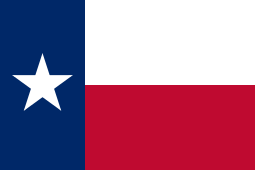Battle of Fort Esperanza
The Battle of Fort Esperanza (November 27–30, 1863) was fought in Texas during the American Civil War. Maj. Gen. Cadwallader C. Washburn led two brigades from the Union XIII Corps to capture a fort on Matagorda Island defended by Colonel William R. Bradfute and a small Confederate garrison. After some skirmishing, the Confederates evacuated the fort. Casualties were light on both sides.
Background
Following the engagements of Brownsville and Mustang Island, a Union expedition led by C. C. Washburn continued up the Texas coast toward Matagorda Island. On the north end of Matagorda Island lay Fort Esperanza commanded by Colonel William R. Bradfute with a garrison of detachments from his own 8th Texas Infantry and the 5th Texas Militia regiment as well as a few local militiamen from the area.[2]
Action
Leading General Washburn's expedition was Brig. Gen. Thomas E. G. Ransom’s Federal brigade. On November 23 Ransom’s men had difficulty crossing Cedar Bayou due to light skirmishing and bad weather[3] but once across they encamped to wait for the next Federal brigade under Colonel Henry D. Washburn to cross. On November 27 General Washburn arrived on the scene and ordered Ransom’s brigade up the center of the island while Colonel Washburn’s brigade moved on a parallel route along the coast.[4] Washburn’s brigade reached Fort Esperanza first. The Federals encountered pickets from the 8th Texas Infantry who retreated within the fortification after a brief reconnoitering skirmish.[5] Bad weather limited activity on November 28 to minor skirmishing and occasional artillery fire which produced no results for either side.[6] On November 29 with Ransom’s brigade in place two Union batteries opened the fight with an artillery bombardment.[7] Union infantry then drove in the Texas infantry from the exterior rifle pits while artillery continued with great accuracy against the Confederate defenses.[8] Colonel Bradfute held a council of war that evening and decided to abandon the fort. Shortly after midnight on November 30 Bradfute’s men detonated the fort’s magazines, spiked the cannon and withdrew.[9] The explosion signaled the Confederates’ evacuation and the Union force entered the fort only to realize the Confederate had already withdrawn. Two Indiana regiments were ordered to pursue the retreating garrison but managed only to capture an artillery piece used to guard the crossing point. Though much of the artillery and ammunition was destroyed, Washburn's expedition succeeded in capturing the fort and found much needed supplies left behind. The Confederate suffered one killed and 10 captured while the Union soldiers suffered one killed and 10 wounded.[10]
Notes
- Official Records of the War of the Rebellion Series I, Volume XXVI, Part 1. Washington, DC: US Government Printing Office, 1889, 418-423
- Howell p.156
- Townsend p.29
- Howell p.158
- Howell p.158
- Howell p.159
- Townsend p.29
- Howell p.159
- Townsend p.30
- Townsend p.30
References
- Howell, Kenneth Wayne, ed. The Seventh Star of the Confederacy: Texas During the Civil War, University of North Texas Press, 2011
- Townsend, Stephen A., The Yankee Invasion of Texas, Texas A&M University Press, 2006
- Official Records of the War of the Rebellion. Series I, Volume XXVI, Part 1, Washington, DC: US Government Printing Office, 1889. 418-423.
